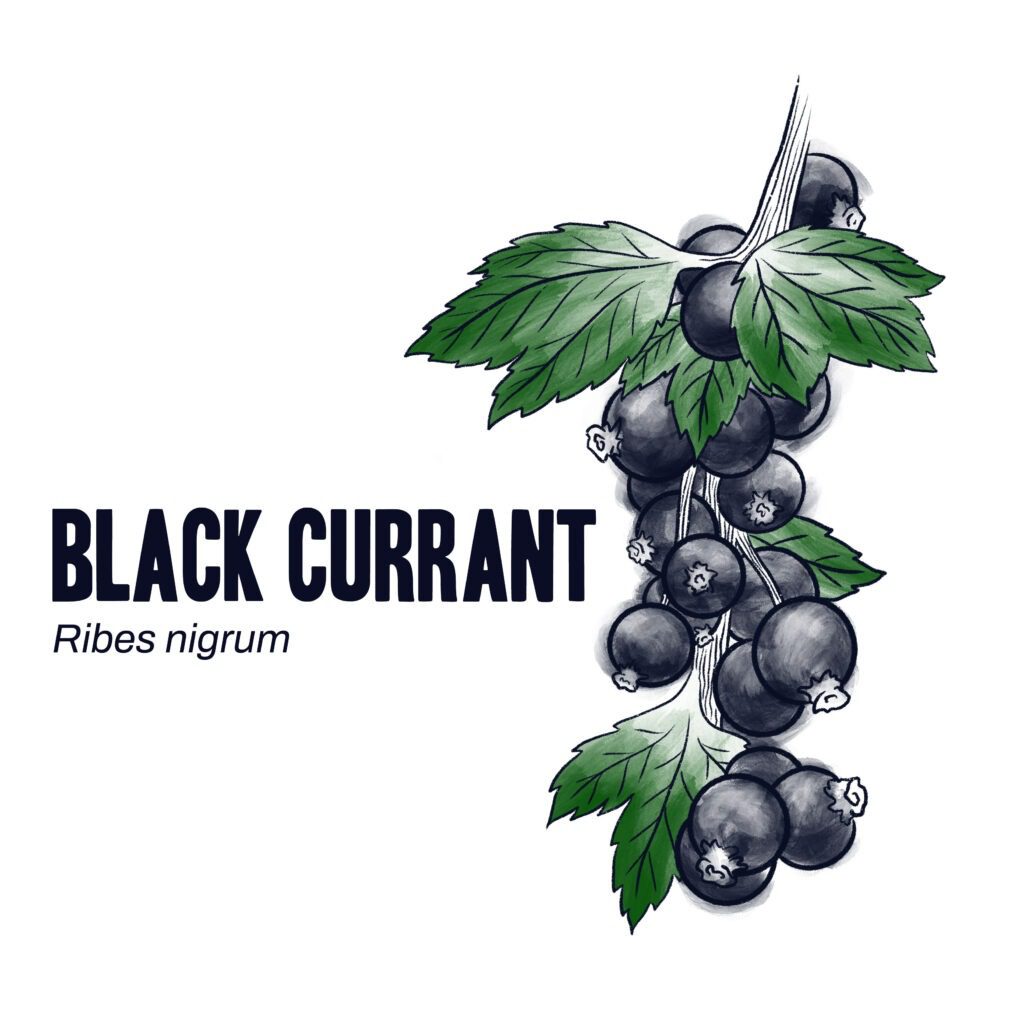
Black Currant
Ribes nigrum
High in vitamins and antioxidants, black currants are one of the best berries for overall human health. Cold-hardy and shade tolerant, this crop matures relatively quickly and is suitable for machine harvest.
DRAINAGE: Moderate to well-drained soils
LIGHT: Full sun to partial shade
ZONES: 3–8 (although some varieties hardy to 2)
SPACING: 2–3 ft in-row, 12–14 ft between rows
YEARS TO PARTIAL/FULL BEARING: 3–5
HARVEST SEASON: June–August
Opportunities
A good companion crop for mixed agroforestry systems because they are one of the few fruits that produce well in partial shade, including under larger trees like chestnuts. Black currants remain popular in Northern Europe, suggesting market development potential in North America. Ripe fruit keeps well on the bushes, allowing some flexibility in harvest. Can be eaten fresh, or sold for processed products: wine, ice cream, syrups, and juice.
Challenges
Black currants do not do well where growing season temperatures are frequently over 90 degrees F. Growing black currants was once banned in the US because they were a host for White Pine Blister Rust, a threat to the white pine timber industry. Disease-resistant cultivars of black currants have since been developed, but markets have been slow to recover.
Management
Currants are self-fruitful, but larger and better crops will occur with cross-pollination. Powdery mildew is a problem, so be sure to plant the right cultivars in an area with good circulation. Pruning is required each year.
Our Research
Savanna Institute’s black currant breeders are making crosses with the most resistant, best performing cultivars in North America: the collection of McGinnis varieties from British Columbia. We will use the resulting progeny families to select for increased disease resistance, while maintaining large fruit size, appealing flavor, and growth habits that are able to be machine harvested.
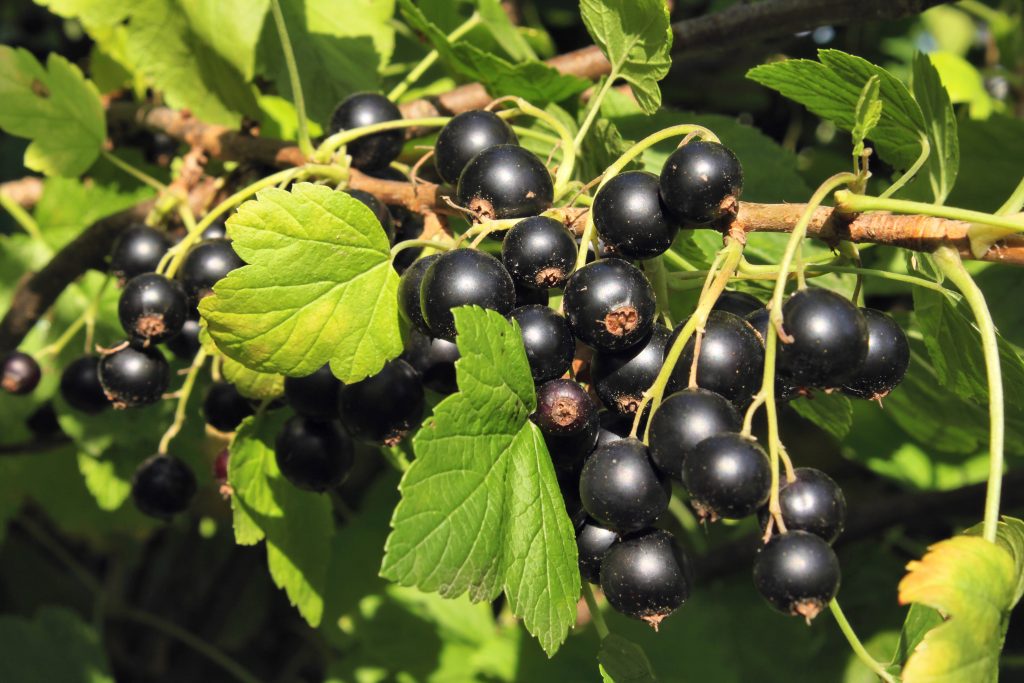
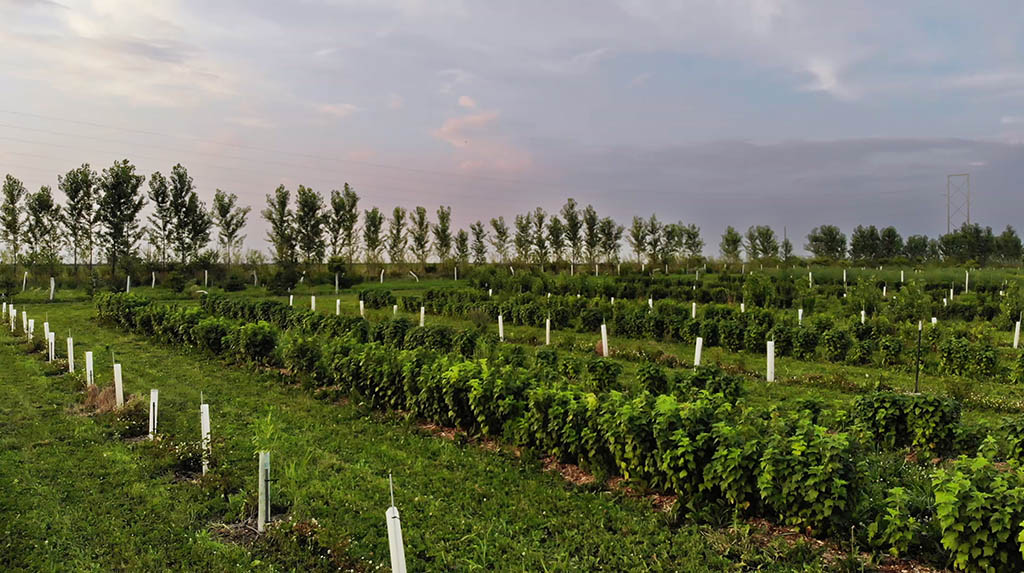

RESOURCE
Black Currants
- Review more basic grower information about plant selection and management.
- See an economics case study and find more sources for information.
- You can also print this handout to use at educational events or for outreach.
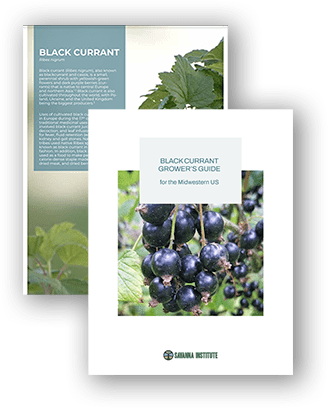
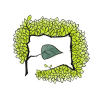
How to Grow Black Currants in the Midwest
Have you ever considered growing black currants?

One-On-One Support for Farm Planning
Technical Assistance Program
Get help planning your perennial farm system. Our Technical Assistance Program is here to guide you through the process of planning, funding, and planting trees on your farm.
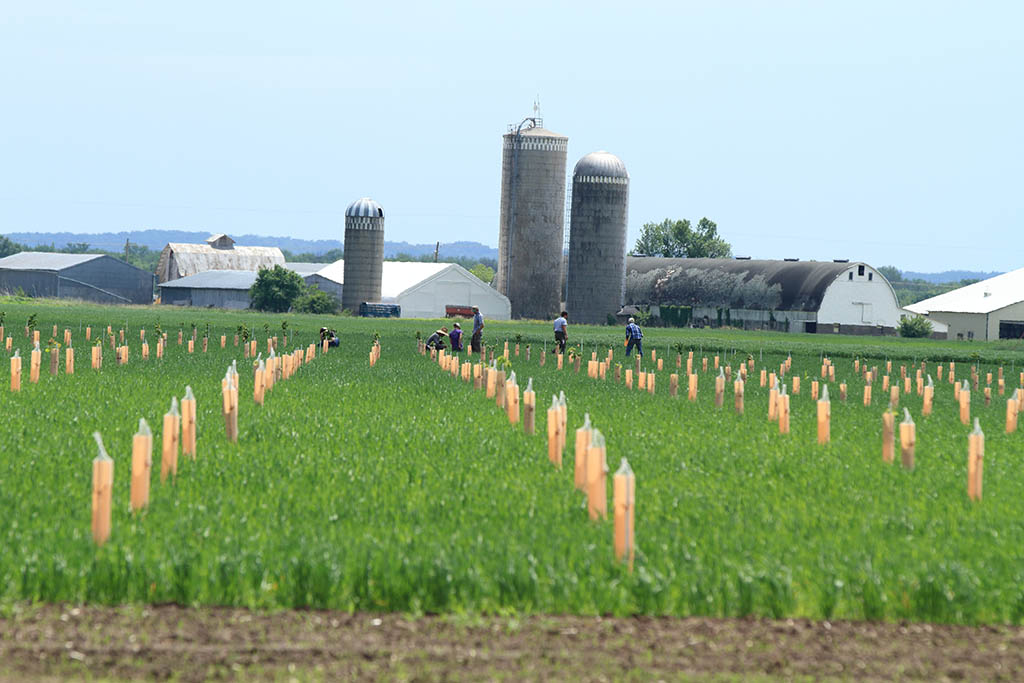
Looking For Plants?
Canopy’s Nursery offers plant material in your region. Find chestnut, walnut, pecan, hazelnut, heartnut, persimmon, pawpaw, black currant, and elderberry for order in their online store. Not only does Canopy increase the availability of high-quality plant material in the region, it also donates part of its proceeds to Savanna Institute’s nonprofit research and education mission.

